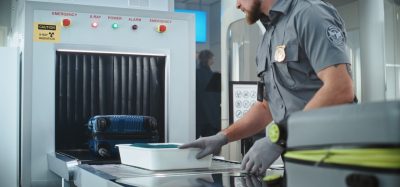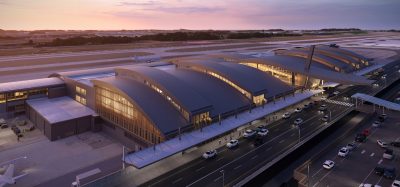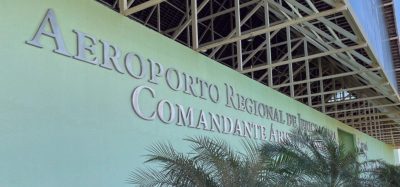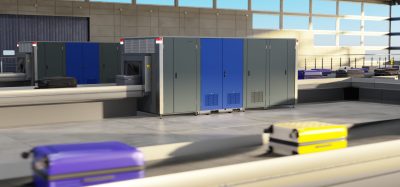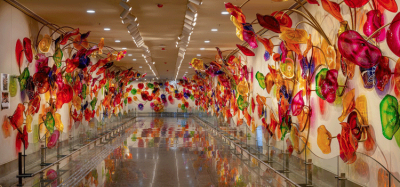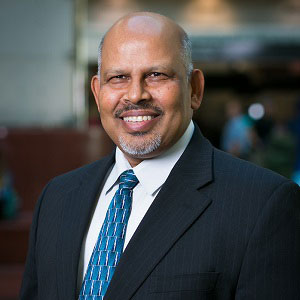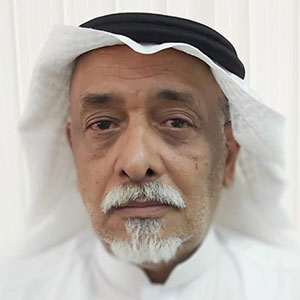The future is here: Airports enter the age of automation
Posted: 5 May 2025 | Dr. Catya Zuniga | No comments yet
Erlangga Rudy Sunaryo, Aviation Researcher and Dr. Catya Zuniga, Associate Professor at the Amsterdam University of Applied Sciences discuss the rise of automation in airport operations, driven by the BrightSky Project at Amsterdam Airport Schiphol.
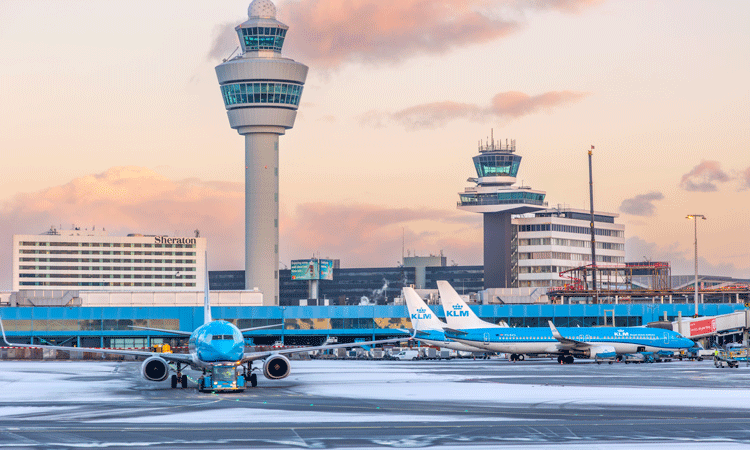

The latest industrial revolution is bringing humans and advanced technologies closer than ever. Automation is transforming industries worldwide, and aviation is no exception. From smarter baggage handling to autonomous vehicles that navigate the airside, the airport of tomorrow is already being built today.
The groundwork for this transformation is being laid through projects like the BrightSky Project, a bold initiative funded by the Dutch Government that aims to shape innovation for the future of MRO and ground handling operations at Amsterdam Airport Schiphol. The project is part of a larger movement that is focused on digitalisation, sustainability and social innovation.
Smart autonomous airside
Airports are inherently complex ecosystems, and the ground handling activities are perhaps one of the most labour-intensive areas in aviation. Traditionally, this has meant heavy reliance on human workers to manage everything from driving and operating ground support equipment (GSE) to airside baggage handling. However, automation is changing this reality.
Free webinar – The future of asset management in global aviation
15 January, 2026, 02:00PM GMT
Join this virtual panel to hear from some of the AtkinsRéalis and aviation sector experts as we discuss how asset management is changing and the impact it will have on the future operations of airports throughout the world.
Automation in airports is not just about making the processes faster, it is about revolutionising the way airports function and improving the working conditions for those involved. The future of airside operations lies in the seamless integration of autonomous vehicles, machines, and systems, where each element works together to reduce human error, enhance safety and create a more sustainable and efficient working environment.
The BrightSky Project, particularly ‘Work Package 3’, is focused on making this vision a reality. By collaborating with various partners like JetSupport, Vanderlande, T-Hive, Schiphol Group, KLM Ground Services, TNO, and Amsterdam University for Applied Sciences (HvA), the project seeks to address the growing challenges of airside logistics. With a focus on sustainable and digitised airside systems, the project is developing solutions that tackle critical logistical and safety issues, while ensuring the long-term sustainability of airport operations.
Managing the complexities of airside operations involves co-ordinating a large fleet of vehicles, personnel and processes. The challenge becomes even greater when you factor in the need for real-time communication and decision-making to ensure the smooth flow of operation. This is where autonomous systems come into play, offering the promise of a more co-ordinated and efficient airside.
To make smart autonomous airside vision a reality, researchers and innovators at the BrightSky project have identified three key research directions that will pave the way: The governance system of autonomous multi-fleet logistics, the controls of secure and safe automated baggage handling, and the identification and sorting of priority baggage unloaded from aircrafts.
A crucial part of the project’s success lies in its collaboration with partners and stakeholders. The consortium partners in this project have been in close contact, holding workshops, visits and interviews, among other activities. Several research topics have been conducted addressing the key research directions.
The project began with researchers at HvA critically reviewing the development of automation technologies in airside operations and identifying the aviation key performance areas (KPAs). Their findings provided a detailed understanding of airside traffic dynamics, including how different operations are co-ordinated, how information flows between stakeholders, and how decisions are made in real-time. Additionally, in collaboration with Vanderlande, an assessment of the stakeholders’ business models was conducted, identifying the potential market for automation technologies in airside operations.
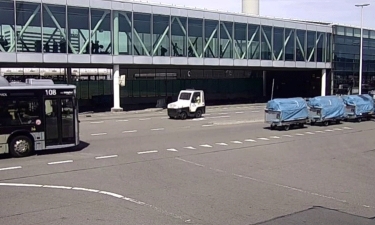

Figure 1: Sample footage of vehicle movement at an intersection at Schiphol Airport. c: BrightSky
Using this knowledge, a simulation of airside activities was developed to assess how different management strategies for baggage transport might impact overall process. With data provided by KLM Ground Services and Schiphol, researchers at TNO have been able to develop a range of fleet management strategies, testing both centralised and decentralised single-fleet and multi-fleet control models to improve task assignments for (autonomous) vehicles. TNO also undertook a scenario-based safety assessment methodology for defining requirements for automated vehicles. To do so, video footage from the airport environment was analysed to identify the scenarios that can be encountered by an automated vehicle (Figure 1). Based on this a hazard analysis and risk assessment (HARA) was conducted, which identifies the hazards and risks that the vehicle should be able to account for. Subsequently, TNO designed a high-level functional concept, and is now conducting a simulation-based verification for the selected scenarios. TNO, HvA, and Vanderlande will disseminate the knowledge generated from this project at international conferences and in high-impact publications.
Another exciting development within the BrightSky Project has been the creation of a traffic information and orchestration system called OTISS (Figure 2). Designed and tested by the Schiphol team in collaboration with Vanderlande to improve situational awareness, this system will inform airside users about the movement of both autonomous and non-autonomous vehicles. It will suggest routes and driving times to optimise traffic flow. The ultimate goal is to create a smart, fully autonomous airside that can seamlessly integrate these technologies to operate in the most efficient and sustainable way possible.
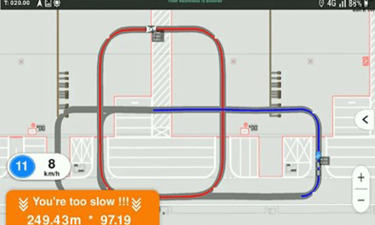

Figure 2: The live demo for Orchestrating Traffic Information System Schiphol (OTISS).
c: BrightSky
Baggage handling with autonomous solutions
While much of the focus on autonomous airport operations has been on vehicle co-ordination, there is also significant progress being made in the area of baggage handling. Researchers from Vanderlande and KLM Ground Services explored technologies suited for outdoor airport environments, evaluating their potential integration into automated baggage handling systems (Figure 3a). The innovations in this area currently focus on the identification and sortation of priority baggage, as well as automating the process between the belt loader and the load units for baggage. This part of the research aims to revolutionise baggage handling through automation, making the process safer, more ergonomic and highly efficient.
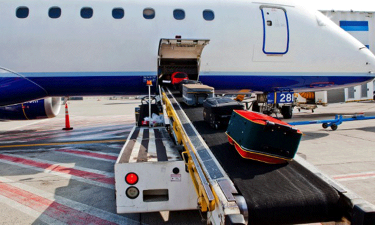

Figure 3a
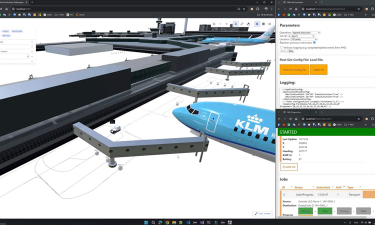

Figure 3b
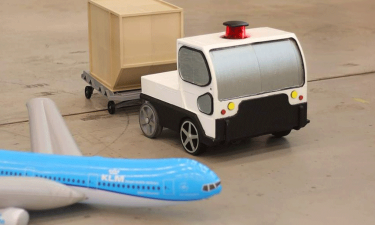

Figure 3c
Vanderlande and T-Hive tested a digital twin with the first use case of automated baggage handling on the apron. A simulated automated vehicle carried out a transport task to move a specified number of baggage containers stored on the apron to be handed over at the baggage hall (Figure 3b). A prototype was then built with a model to scale, to showcase the process with the real software (Figure 3c).
As the Bright Sky Project progresses, experts from various fields continue to collaborate and contribute their knowledge, shaping the future of autonomous airport operations. With each new breakthrough, we move closer to a world where airports operate with greater improvement.
The idea of an autonomous airside ecosystem may have once felt like science fiction, but today, it is on the horizon. Imagine a world where ground vehicles move in perfect co-ordination, baggage is handled with minimal human intervention, and smart systems optimise every aspect of airport logistics.
That future is not decades away. It’s right around the corner.


c: BrightSky
Erlangga Rudy Sunaryo is an Aviation Researcher at the Amsterdam University of Applied Sciences. He obtained an MSc in Transport & Environmental Economics from Vrije Universiteit Amsterdam. His expertise lies in aviation technologies and sustainability. Both Erlangga and Gijs are working on the BrightSky project alongside other R&D partners.


c: BrightSky
Dr. Catya Zuniga is Associate Professor at Amsterdam University of Applied Science. Her main research interest has been focused on developing strategic and tactical airport and air traffic management decision support tools and strategies to improve the performance of the aviation operations. Together with Erlangga, She is working on the project BrightSky along with other consortium partners.
Join our free webinar: Beyond Hype: Deploying Facial Recognition at National Scale
Revolutionising India’s travel experience through the Digi Yatra biometric programme
Air travel is booming, and physical infrastructure can’t keep up. India solved this capacity crisis with biometric identity management.
Join the architects behind the Digi Yatra Foundation and IDEMIA to deconstruct one of the world’s largest national biometric deployments. Move beyond marketing hype and learn the engineering reality of a fully contactless “Single Token” journey.
This briefing reveals the strategic framework, SSI (Self-Sovereign Identity) integration, and bottleneck analysis that enabled over 60 million seamless domestic journeys.
Date: 16 Dec | Time: 09:00 GMT
rEGISTER NOW TO SECURE YOUR SPOT
Can’t attend live? No worries – register to receive the recording post-event.
Related topics
Airside operations, Autonomous Technology, Baggage handling, Data, Digital transformation, Ground handling, Innovation, New technologies, Operational efficiency



